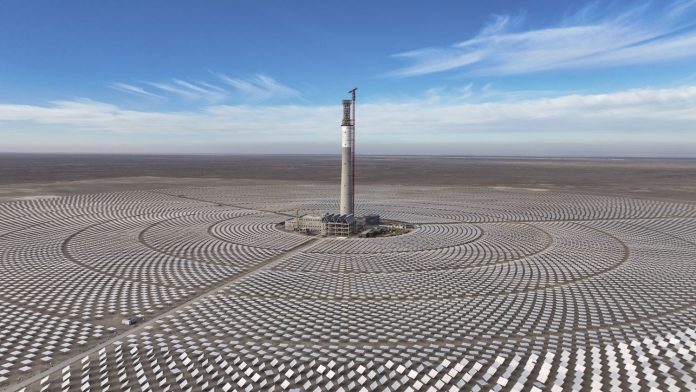The Centre for Research on Energy and Clean Air (CREA) says China’s production of new clean energy in the first half of this year equals the UK’s production from all sources over the same period last year.
The report released by the Chinese government showed a 5 per cent drop in electricity generation from coal and gas in July, highlighting the country’s shift to renewables, shaped by the inclusion of record amounts of solar and wind generation.
The data shows that China is racing ahead in renewables, adding record amounts of solar and wind generation, eclipsing the rest of the world. The transformation could be the world’s best hope for averting climate catastrophe, according to analysts. The data points to a surge in wind and solar power in the world’s leading emitter of greenhouse gases.
On top of that, China set a new record last year with 293 GW, eventually leading to wind and solar capacity surpassing the country’s coal-fired power capacity. According to Rystad Energy, solar power alone will replace coal as the primary energy source with a total capacity of 1.38 TW, 150 GW more than coal.
The tendency marks electric vehicle production moving forward, with hybrids and fully electric vehicles accounting for more than half of all new models sold in July. The steel industry is also turning around, with no permits for coal-fired power plants issued in the first half of this year.
In spite of the positive bias, China still accounts for about a quarter of the world’s carbon production, representing the combined total emissions of the developed world. Therefore, reversing decades of almost uninterrupted rapid growth (almost tripling from about 3.6 billion tonnes of carbon emitted in 2000 to 11.4 billion in 2022) will have seismic implications for the global climate emergency.
China has pledged in 2020 to bring its emissions to peak by 2030, which remains its official target, but the country could reach its peak by 2025 if the government takes sufficient action, according to analysts.
In order for the world to limit global heating to 1.5C above pre-industrial levels, which scientists say is still technically possible, global emissions would have to halve by 2030, which is unlikely unless China’s emissions can peak in the first half of this decade and fall rapidly in the second.
CO2 emissions from energy use and cement production, which account for more than 90 per cent of China’s total emissions, began to decline in March, according to CRE/ CO2 production fell by about 1 per cent in the second quarter of the year, the first quarterly decline since the economy reopened after the lockdowns. Thus, emissions from the energy sector fell by about 3 per cent, cement production by 7 per cent and oil consumption also fell by 3 per cent.
